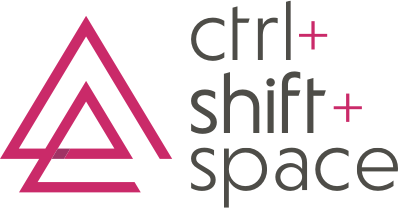Keeping Interiors Significant
K.I.S.S.E.S. - part 1 of 4
As both a space consumer and place creator, I’ve spent 15+ years either enduring and overseeing, or planning and implementing workplace transitions of all shapes and sizes. Through these experiences, I’ve discovered there are four integral components for keeping office interiors projects from heading sideways.
Over the course of a four part mini-series of posts, I’ll share with you an easy (albeit somewhat cheesy!) acronym as a tool for Keeping Interiors Significant, Sustainable, Engaging & Simple (K.I.S.S.E.S.)
In recent years...
Open-plan workspace design has received a ton of mixed reviews. Surveys from around the world report that open office layouts often create distracting, noisy, and stressful work environments that do not effectively support individual well-being. Of course there is contrary data that suggests the open-plan achieves the exact opposite effect, and instead encourages innovation, community, collaboration and can even heighten productivity and morale.
Arguments against traditional or closed-plan workspace, claim the abundance of private offices and high-walled cubicles reduces accessibility to leadership, creates disconnected communities, and can even breed malcontent and anxiety in employees due, quite literally, to closed office and conference room doors. Of course, the ability to concentrate, perform heads-down tasks and hold private conversations are some of the pluses to a more conservatively planned office.
It’s a heated debate, and for good reason.
Yet, it is not simply a matter of open vs. closed office design.
Rather, the root of the problem comes long before the design phase even begins. By rushing through or skipping all together, the discovery phase of a workplace transition or office interiors project, a critical opportunity to engage in a due-diligent, information-gathering process is being missed, whether with intent or not.
As much as I hate clichés, it is painfully true that one size does not fit all when it comes to workplace design. Instead heightened degrees of success are being found when office environments are a blend of open and closed areas that are customized versus prescribed. In fact, based on a multitude of reports and observations from workplace design and strategy experts, one resource being Gensler’s 2013 US Workplace Survey, and another being their recent Design-Thinking article titled Finding Your Balance -
“When collaboration and focus are in sync, individual and team performance soar.”
With that, and prior to putting any design on the table much less into effect, stakeholders, employees and C-suite alike, should engage with workplace strategy experts who can help them uncover their true behind-the-scenes culture. These efforts, meant to elicit and gather data directly from those who work and breathe in the space, will build the foundation from which informed decisions are made and eventual solutions are implemented.
What I’m getting at is, asking for forgiveness after the fact may not be the most effective, nor successful, way to approach something that affects so many lives - and on a daily basis.
Thought leaders at HOK, a global design and architecture firm, in a recent article on Top 10 Trends Influencing Workplace Design state:
Business leaders must recognize that it’s people that matter. It's people that affect the bottom line - over time.
Good design is human-centered, not trend driven.
“A 2 to 5 percent increase in staff performance can cover the total cost of providing for their workplace accommodation.”
For this reason, it is paramount for companies to engage with experts who can put together and implement an effective communication and change initiative program. According to benchmarking studies by research company Prosci, from their book: ‘Change Management: The People Side of Change,’ 2012 -
“Workplace projects with an effective change management component are six times more likely to meet their objectives and succeed. ”
So, there you have it. Invest the time and energy upfront. Research, ask questions and learn from those who tow the line and from experts who have been there/seen that before. The subsequent plan and design, so as to create a work 'place' and not just a work 'space', will result in Keeping Interiors Significant.
--


